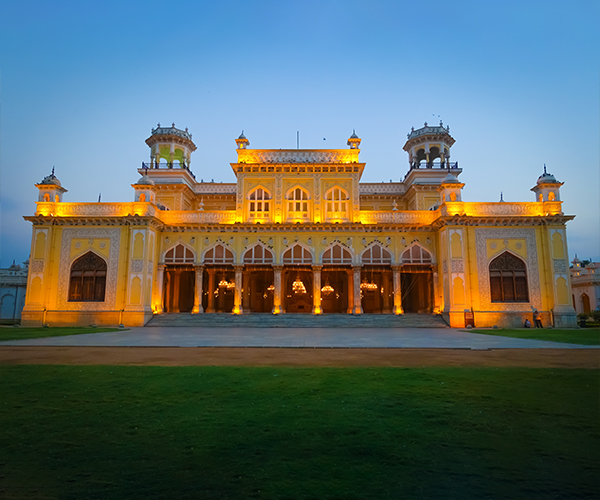
Beyond The Marvelous Khilwat, Lay The Grand Palaces Of The Chau Mahal Complex.
Four palaces, built in neo-classical style, situated symmetrically opposite to each other, all around a gorgeous central pool. While the architecture of these four palaces have maintained a particularly elegant sense of uniformity, Aftab Mahal & Mehtab Mahal are held up by Ionic columns; while Afzal Mahal & Tehniyat Mahal are held up by Corinthian columns of double-height. The four palaces have played various roles throughout history, and are now preserved in great conditions. Enter the Chau Mahal complex to immerse yourself in the passage of time, with each palace serving the function of a museum, housing extensive collections accumulated and utilized by the Royal family over time.
Today; while Aftab Mahal features an exhibition entitled ‘Tamanna – Reflections of the Royal Zenana’ showcasing the finest of period textiles and embroideries; the Mehtab Mahal houses manuscripts, precious books and records of the bygone era, painstakingly and properly restored by a team of expert archivists to preserve the legacy of the grand State. Tahniyat Mahal houses period furniture from the time of the Sixth and Seventh Nizams, while Afzal Mahal, as the grandest jewel of the four, had served as and is preserved as the lavish drawing room from the time of the Fifth Nizam.
Aftab Mahal
For a glimpse into the lifestyles of the women of the court, step into Aftab Mahal. Different ceremonies and social contexts – weddings, farewells, tea parties, gift exchanges, are beautifully depicted using mannequins dressed in the finest possible specimens of textiles and embroideries. While a tableau depicts the celebration of the birth of a child; another shows trays of gifts being transported on an elephant; while another sets up the scene of a wedding, with the mannequin bride in a gorgeous red & golden sari, surrounded by friends with trays full of offerings.
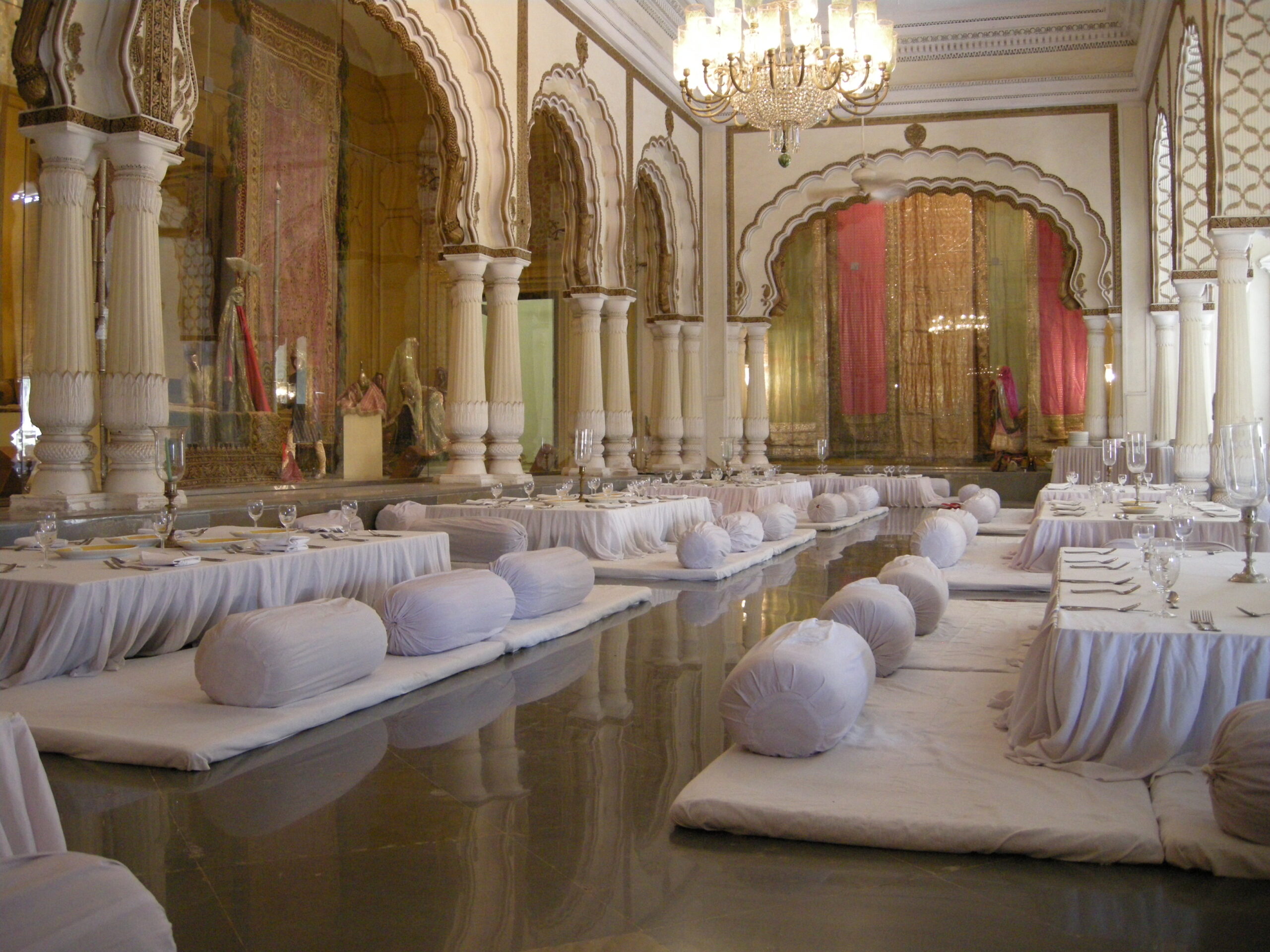
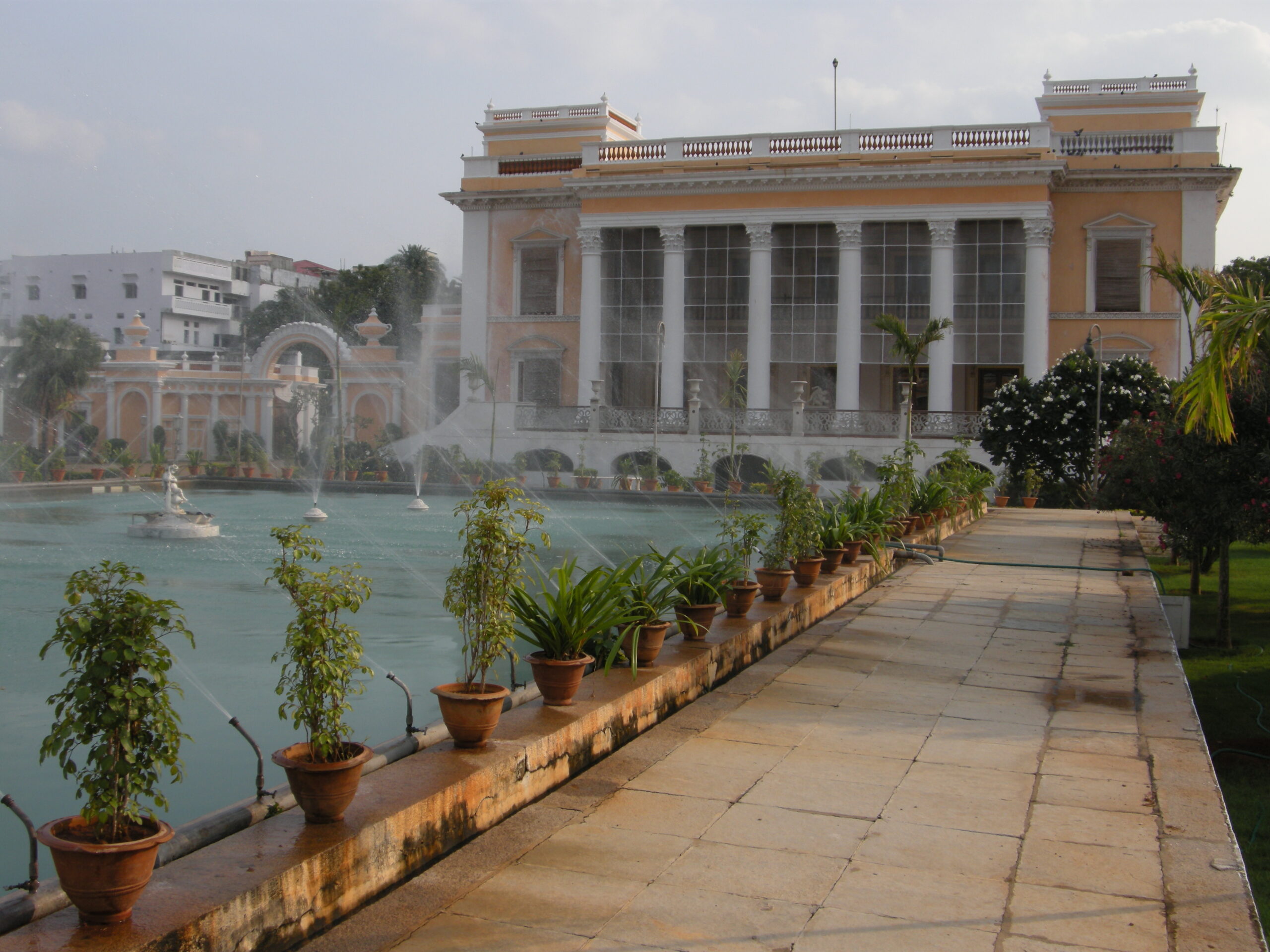
Afzal Mahal
The Royal Drawing Room has found its home at Afzal Mahal. Upon approaching the main hall, visitors are invited to gaze upon the unique marble statue depicting two wrestlers in action, in the open verandah. Since the time of the Fifth Nizam, the structure was used as the drawing room to receive foreign dignitaries & guests. The ground floor was furnished in the European style, and remains intact till date. There are numerous objects of precious art adorning the walls, on every corner of Afzal Mahal – including Belgian chandeliers and glass cabinets with immaculately preserved knick-knacks. A flawlessly preserved dining room sits behind railings on the ground floor, as does a billiard room with a table.
Mehtab Mahal
The library, housed at Mehtab Mahal, is diligently taken care of by a hard-working team of librarians and archivists. The library hosts a large collection of history, philosophy, political science, fiction and non-fiction books. The archives have been lovingly restored by the team over years of diligent work.
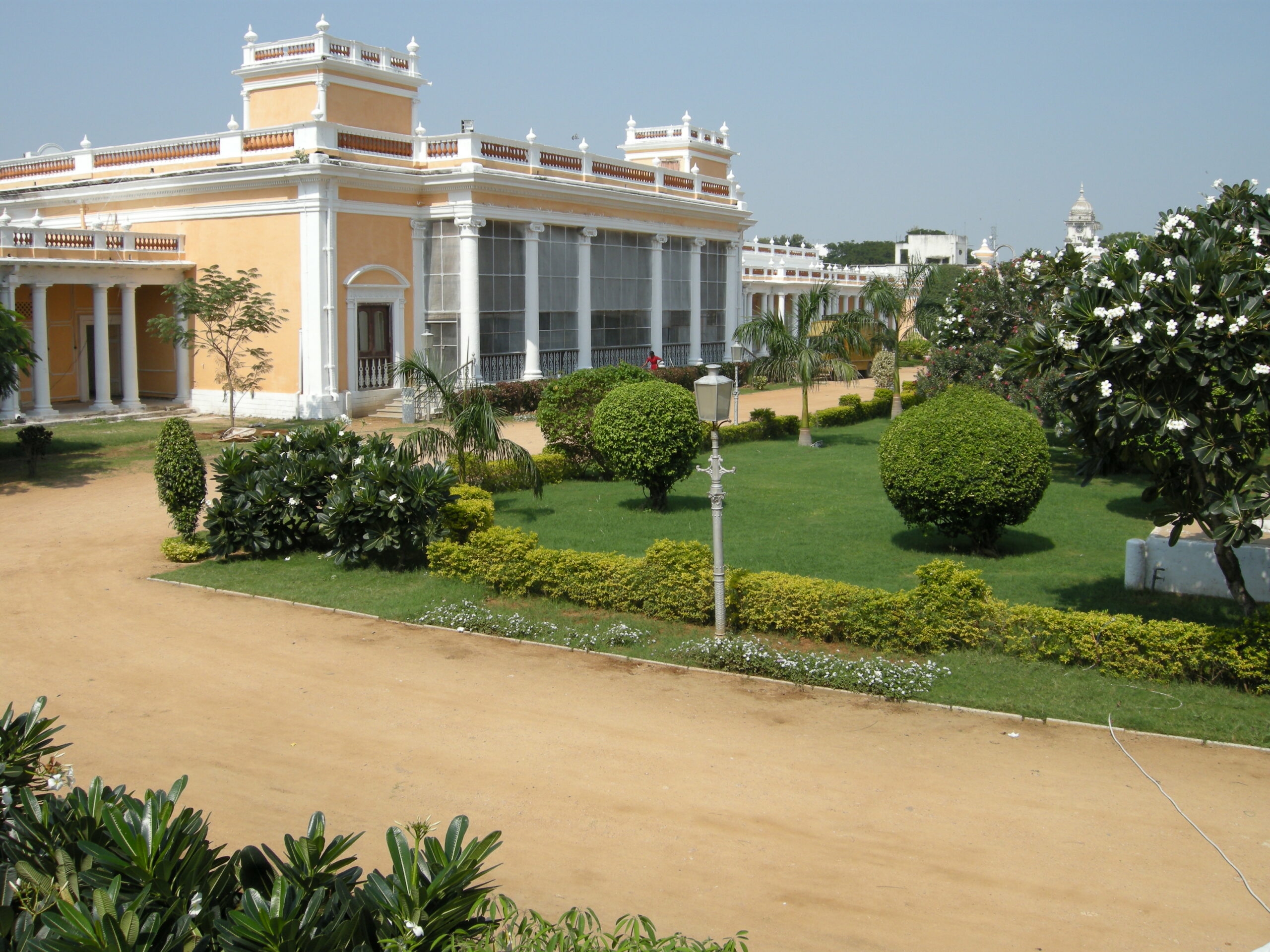
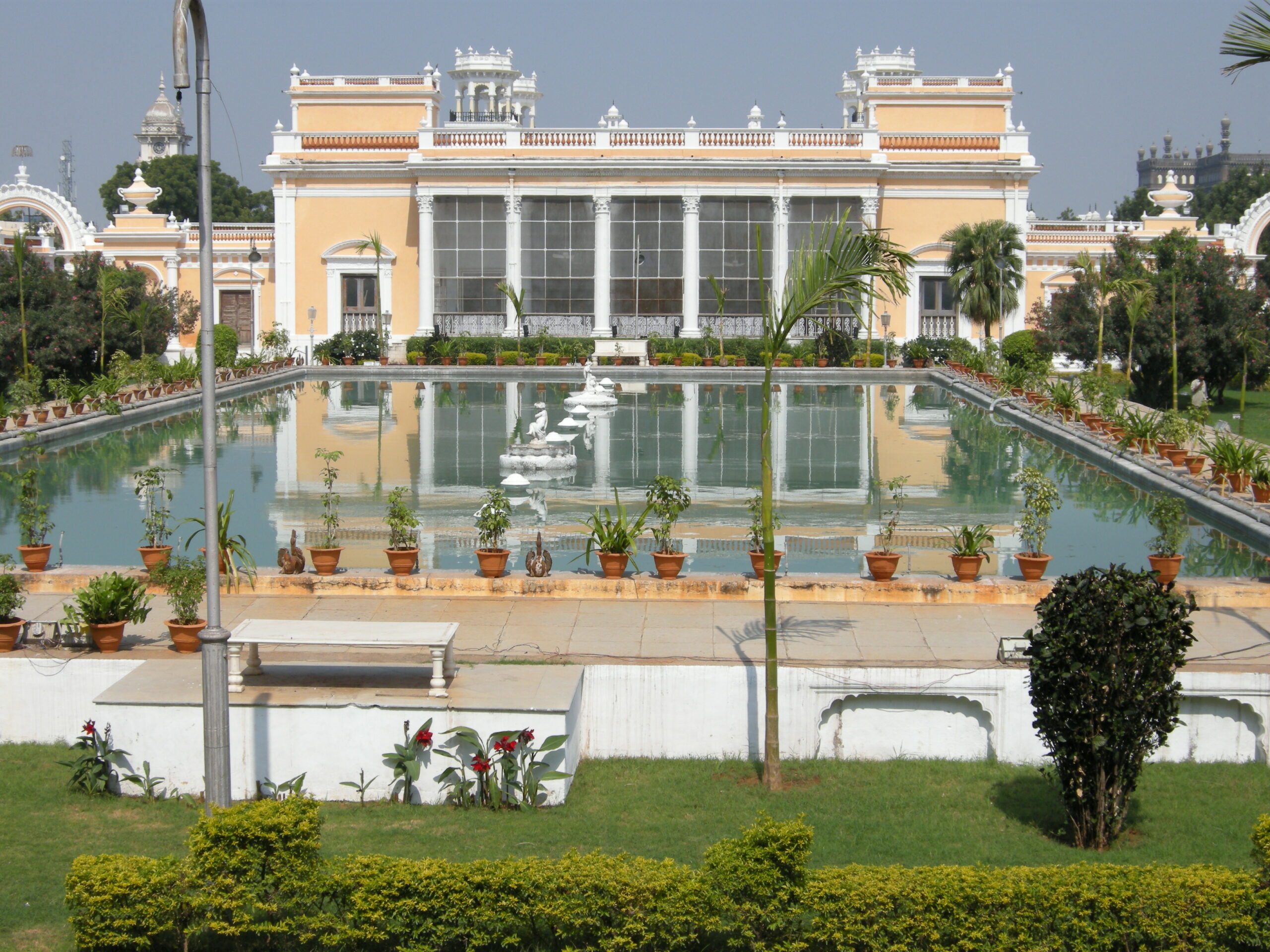
Tehniyat Mahal
It’s all about the royal lifestyle in Tahniyat Mahal, capturing the essence and grandness of the Mughal era, with exhibitions of sparkling chandeliers, Mughal and European furniture, textiles, artistinal objects and grand cutlery. Various aspects of opulent life have been re-created through the Palace. The diwan-khana in the main hall houses a luxurious throne with the masnud and a ceremonial sword. The insignia standard of Mahi-o-Maratib – a Mongol emblem of royalty introduced in India by Timur, the Turk-Mongol conqueror, rests in the background. The emblem is a symbol of the highest dignity bestowed on the Nizam by the Mughals. On either side of Mahi-o-Maratib are the Kaukabah. On either side of the throne are two porcelain vases, and overhead hangs a blue Belgian chandelier. On either side of the grand hall, lie two representations of European-style drawing rooms, replete with carved period furniture. The walls are adorned with a large number of photographs of the lives of the Sixth and Seventh Nizams.